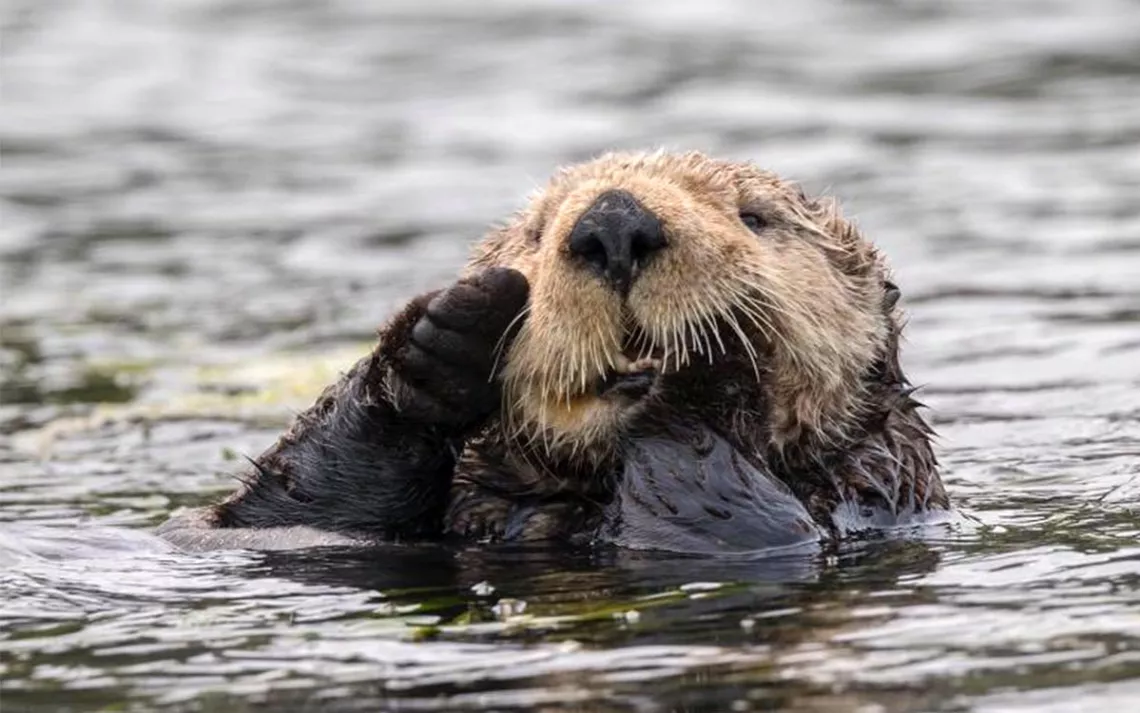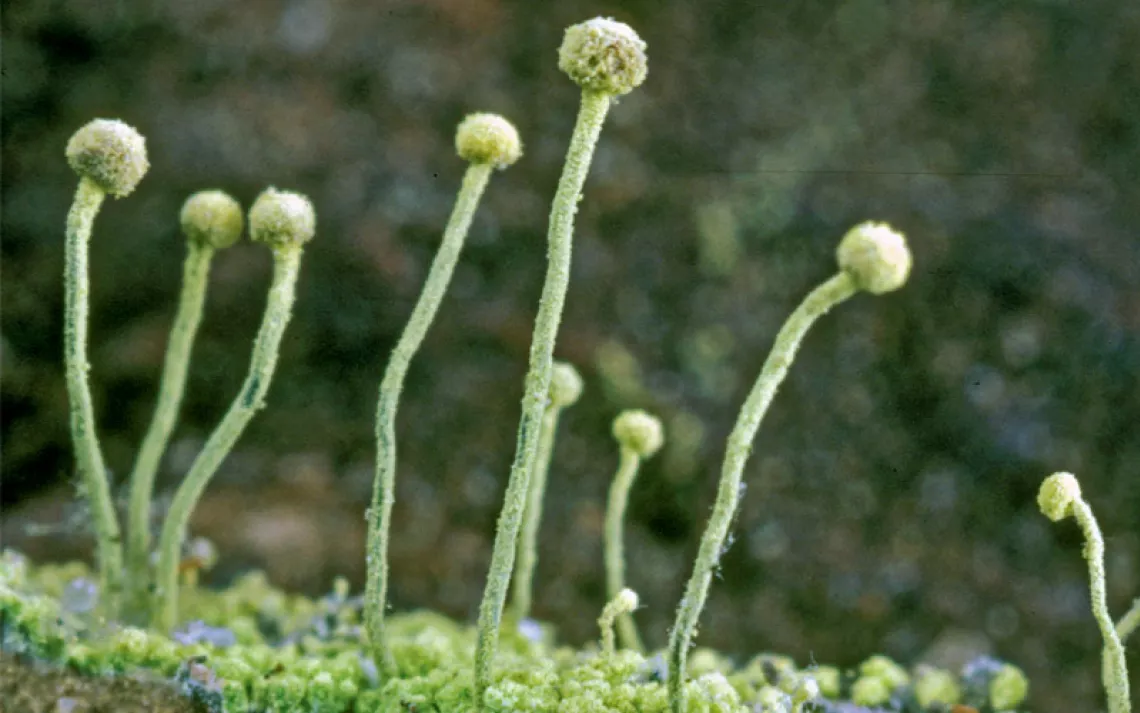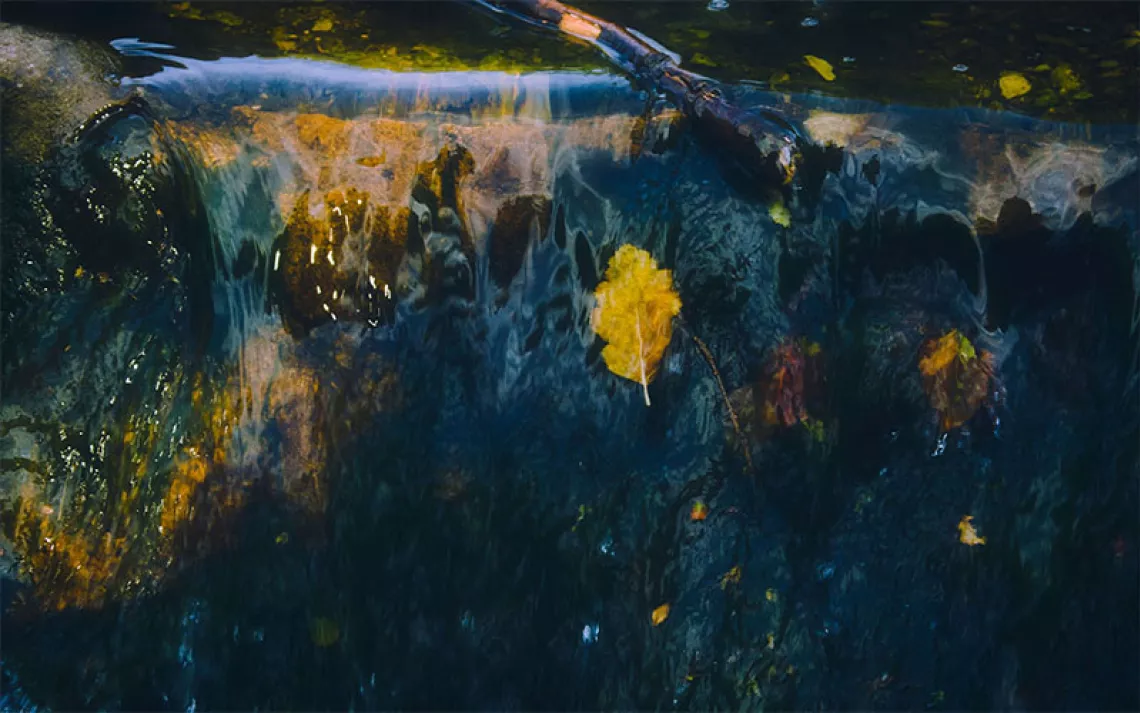Pets Gone Wild
Toxoplasmosis from feral cats is just one consequence of poor pet management

Photo courtesy of Trina Wood/UC Davis
A population of endangered southern sea otters living along a thin strip of the California coast, once decimated by the fur trade, has since recovered to about 3,000 individuals. They still face many threats, however, including loss of underwater kelp forest habitat, predation by sharks, boat strikes, fishing nets, and oil spills. Now researchers investigating the source of another threat the otters face—a parasite called Toxoplasma gondii Type X—think they’ve found an answer. The culprit? Wild cats.
Toxoplasmosis is a well-known parasite, especially to cat owners, who can pick it up while cleaning a litter box. The single-celled organism colonizes all sorts of animals, including humans, but to sexually reproduce it needs a feline host. Once infected, a cat can shed millions of oocysts, egglike toxoplasma cells, in their feces. If the feces are deposited outside, it can infect soil or run off into storm sewers, streams, or rivers, where the cysts make it into the ocean.
Once they make it to the sea, the oocysts are deposited in sediments that marine snails eat. When otters eat those snails, they become infected. The parasite causes the animals’ brains to swell and can be lethal.
According to previous studies, up to 70 percent of stranded sea otters carry the disease. Among southern sea otters, only about 3 percent of otters die from toxoplasmosis, and the infection contributes to the death of 8 percent of the mammals.
Researchers at the University of California, Davis, decided to figure out where the deadly strains of the disease came from. “The team has been working on this parasite for over 20 years now, even before I joined,” veterinarian and pathologist Karen Shapiro, lead author of the study in the Proceedings of the Royal Society B, says. “We’ve unraveled all kinds of interesting mechanisms that help explain why so many otters are infected. But we still at the time this research started, five years ago, didn’t understand why some otters can be infected for life without any consequences, whereas other otters will die from the parasite.”
The team looked at 135 southern sea otters infected with Toxoplasma gondii that died between 1998 and 2015. While most of the otters passed away with no signs that the parasite led to their death, 12 showed definite signs of dying from the Type X strain of toxoplasmosis. That variation of the toxoplasmosis is most commonly found in wild cats, like bobcats and mountain lions. However, the team believes most of the Type X oocysts are coming from feral house cats.
“Even though proportionally more wild cats are infected with these virulent strains, because the sheer numbers of domestic cats are so much greater in coastal California, orders of magnitude more oocysts are getting into the ocean from domestic cats,” says Shapiro.
But it’s not just the cats alone causing the otter infections. More land-based pathogens are reaching animals in the ocean due to runoff and stormwater. The loss of wetlands, which could sequester these oocysts and keep them from reaching the deeper kelp forests, create the conditions for more disease. “These are all changes that we've made to the landscape that are facilitating and increasing the number of pollutants that are getting into the sea,” Shapiro says.
While restoring wetlands, finding new ways to manage stormwater, and controlling feral cat populations are big pieces in protecting the otters, Shapiro suggests individual pet owners can help too. Keeping domestic cats indoors is a start, but even more importantly, pet owners should bag up their litter box remains and put them in the trash; toxoplasma oocysts are not removed during wastewater treatment and will make it into the ocean if flushed down the toilet.
Otters aren’t the only animals suffering due to poor pet management. In fact, domestic and companion animals are a huge problem for species conservation all over the world.
There are dozens of other cases in which domestic animals or pets let loose in the wrong ecosystem cause havoc. Recent studies have shown feral cats eat about 1 million lizards per day in Australia, pushing some species to the brink of extinction. Pet Burmese pythons that have escaped into the Everglades have reduced possums and raccoons by over 99 percent and bobcats by 89 percent, and have eradicated rabbits and foxes in portions of southeast Florida.
A 2017 study in the journal Environmental Reviews documents many other cases, from ornamental fish taking over ponds and rivers to amphibians released into the wild spreading Chytrid fungus, which has nearly wiped out dozens of species of frogs. That’s not to mention the number of birds and small mammals killed by feral cats. It’s believed that globally, cats have caused the extinction of 33 bird species.
Like the otter study, it takes time to deduce how invasive animals are impacting native wildlife and more time to implement solutions. For instance, another recent study in the journal PeerJ shows that the western pond turtle, found along the Pacific coast of the United States, is intensely competing with the red-eared slider, a species of turtle found in the central US that is globally popular in the pet trade. The western pond turtle is now listed as vulnerable by the IUCN, the international endangered species list, and are protected by California and Oregon.
When the sliders get too large and a little smelly, their owners often dump them. “They are so cheap, they are in every single pet store, and they seem like a great pet until they get to be a few years old, and then they get big, mean, smelly and are a pain to take care of,” Max Lambert from the University of California, Berkeley, a postdoc and lead author of the study, said in a statement. “So, people just take them to a nearby pond and let them go.”
There is no easy way of controlling the slider; they have to be captured and sterilized or euthanized—a slow, costly process. The same goes for feral cats, pythons, crayfish, starlings, and other released species wreaking havoc on ecosystems across the globe.
Shapiro says she’s not an advocate for euthanizing feral cats, but she does say the only way to help the otters is to get the cats off the landscape, and to be more mindful about how the land and water interact.
“We want to look at this as one example of this larger problem of marine water contamination and pollution that comes from land,” she says. “Remember, there’s this connectedness; we’re really not separated. What we’re producing on land is going to end up in our waterways and the marine system, causing harm to wildlife but also to us, because we are consuming food from the ocean.”
 The Magazine of The Sierra Club
The Magazine of The Sierra Club







